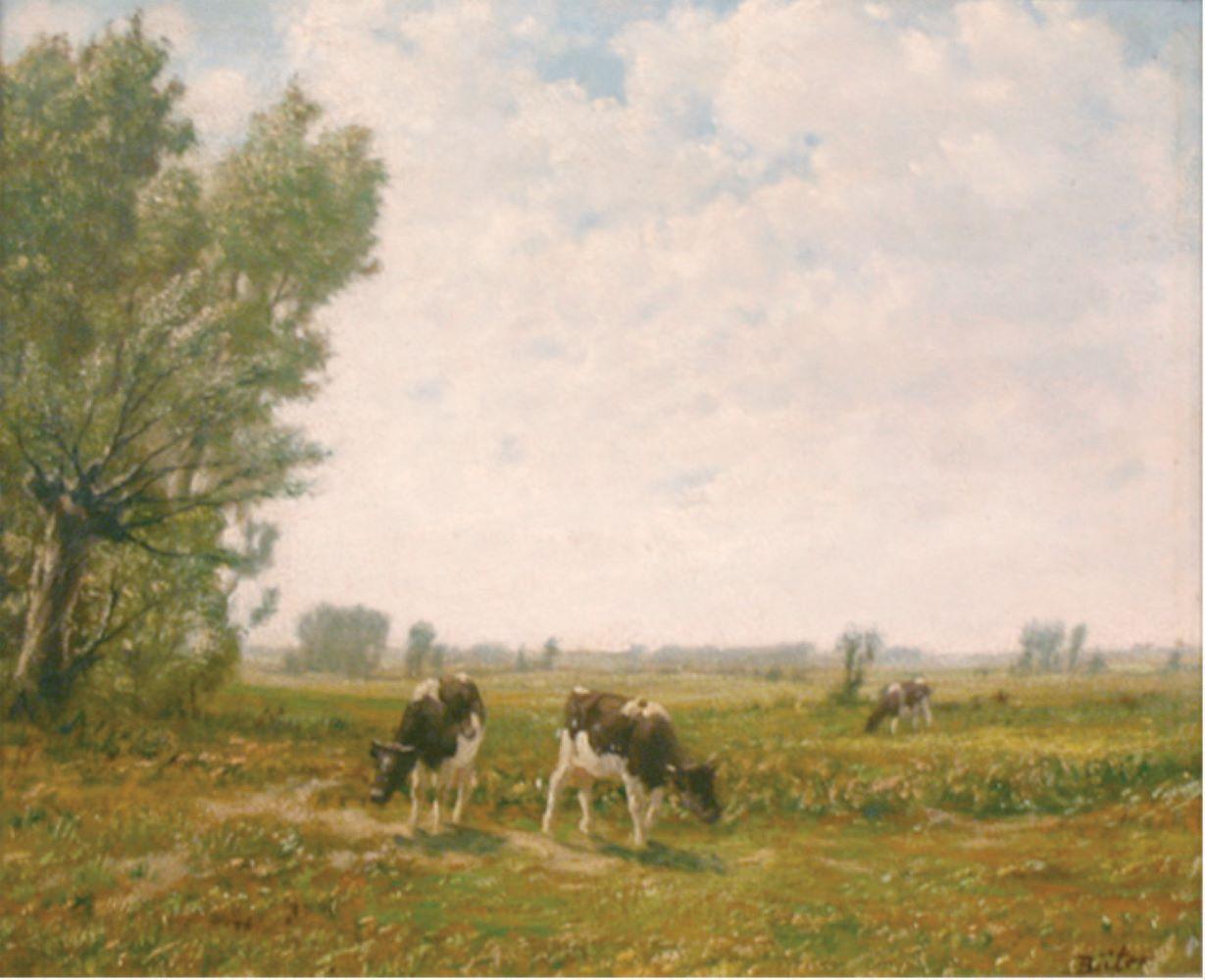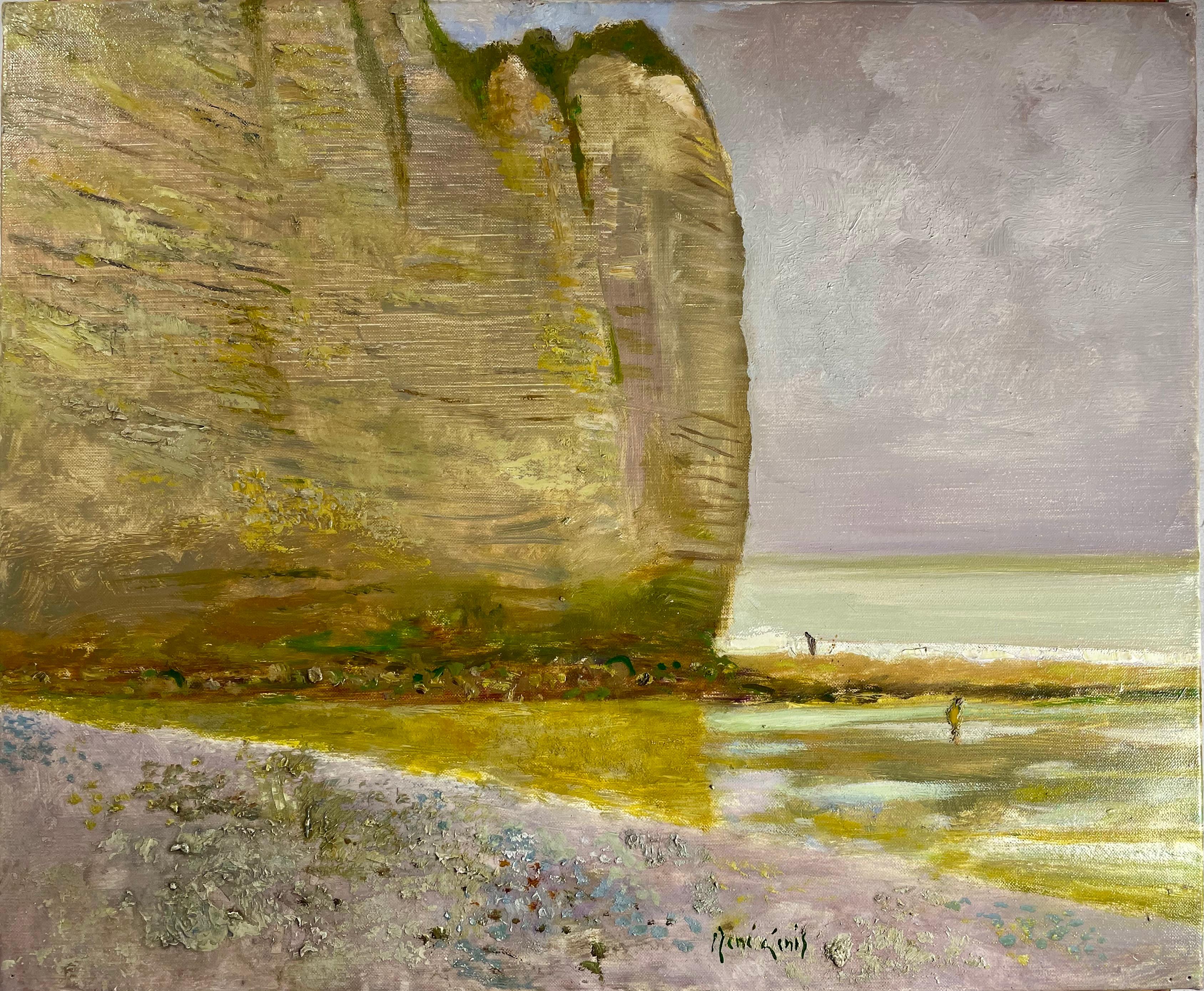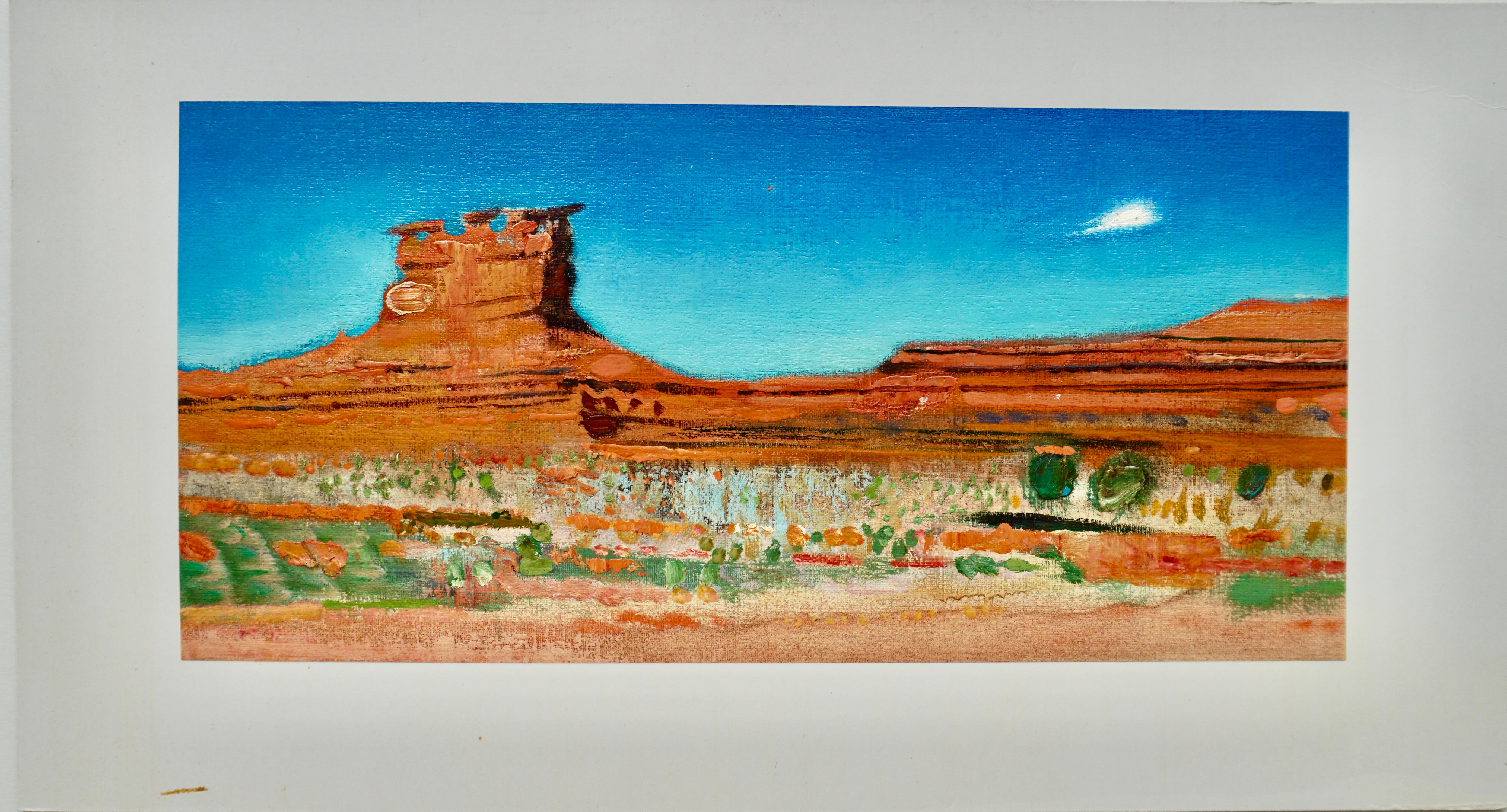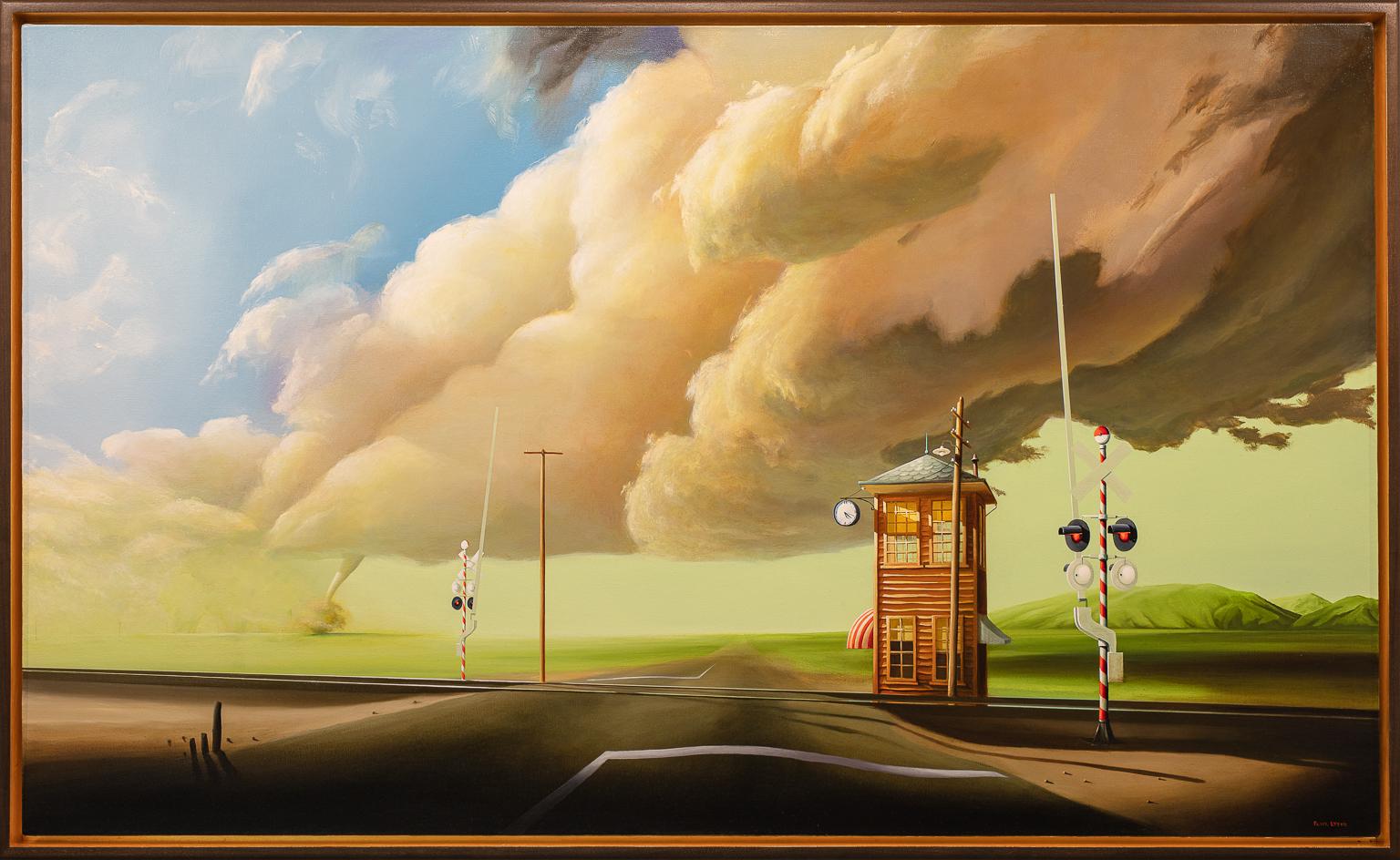Items Similar to Adentrarse en el Desierto
Want more images or videos?
Request additional images or videos from the seller
1 of 5
Eduardo RocaAdentrarse en el Desierto2019
2019
About the Item
Since the beginning of his career, Roca has moved with a high level of technical skill, a feel for light and color in the – at first glance – classic genres of landscape, still life and portrait, with landscapes representing the majority of his oeuvre. One quickly realizes that the technical skills of the artist are a motor for constant further development: Roca perfects the selection of the cut-out, selection and reduction of the color palette, light as a design factor and always gets involved in the immediate experience of urban situations. Roca questions the genre landscape as such by choosing subjects and charging them artistically, which at first glance have nothing to do with a landscape, such as factory premises or construction sites. A high point of this development and, at the same time, the turning point to the imaginary landscapes are variations that he paints from a motif and combines into an overall work, like the “Variaciones” in this exhibition. 25 views of an inconspicuous – real – house result in an impressive ensemble and show in a concentrated form the possibilities of expression and artistic enhancement that a motif that at first glance can experience banal. This has nothing to do with a landscape in the conventional sense.
This multiplication can no longer be increased and Roca, in all its radicalism, starts to design and thus reduce its landscapes as a whole. The result is usually vast, deserted landscapes with a mystical light, the attempt to locate them in a forced manner must fail. Since the landscapes are constructed, nothing about them is accidental: there are no people. They are only remembered by buildings, but much more by their remains, which create a morbid feeling and force the viewer into the role of a late survivor. The emptiness is deceiving, however, because it is the viewer who is supposed to enliven and experience the scenes, and the works are clearly called upon to do so.
Roca uses the almost god-like freedom to create landscapes for mostly unusual breadth and depth. Deep horizons increase the effect, as does an often glistening light that reveals the origin of the artist. The stage is created, he leaves the conquest to others.
- Creator:Eduardo Roca (1973, Spanish)
- Creation Year:2019
- Dimensions:Height: 35.44 in (90 cm)Width: 37.01 in (94 cm)
- Medium:
- Period:
- Condition:
- Gallery Location:Wien, AT
- Reference Number:1stDibs: LU1782211642562
About the Seller
No Reviews Yet
Vetted Seller
These experienced sellers undergo a comprehensive evaluation by our team of in-house experts.
Established in 1973
1stDibs seller since 2022
5 sales on 1stDibs
- ShippingRetrieving quote...Ships From: Wien, Austria
- Return PolicyA return for this item may be initiated within 7 days of delivery.
More From This SellerView All
- Schneelanschaft / Snowy landscapeLocated in Wien, 9The artwork is signed and dated on the lower right and provided with sticker verso. The frame is a golden showpiece. Provenance: Private collection SwedenCategory
1940s Modern Landscape Paintings
MaterialsOil, Canvas
- CourtyardLocated in Wien, 9Pötsch was an artist of the Austrian interwar period whose oeuvre can be found between moderate Expressionism and realistic tendencies. With his loosely and dynamically placed brushs...Category
1910s Modern Interior Paintings
MaterialsOil, Canvas
- Toledo, Alcantara BridgeBy Hans FroniusLocated in Wien, 9Hans Fronius is an important representative of Austrian Expressionism and, along with Alfred Kubin, is considered one of the most important Austrian graphic artists and illustrators.Category
1970s Expressionist Landscape Paintings
MaterialsCanvas, Oil
- ArbustosBy Eduardo RocaLocated in Wien, 9Since the beginning of his career, Roca has moved with a high level of technical skill, a feel for light and color in the – at first glance – classic genres of landscape, still life ...Category
2010s Landscape Paintings
MaterialsCanvas, Oil
- Dawn IIBy Walter StroblLocated in Wien, 9Work Strobl’s painting is also reminiscent of the constructed nature of the world in general: his cityscapes, pictures of rooms and passages subtly ...Category
2010s Landscape Paintings
MaterialsCanvas, Oil
- Landschaft bei NaunhofBy August Wilhelm DresslerLocated in Wien, 9August Dressler is one of the painters of the New Objectivity. He is one of the lesser-known artists of the Weimar era, but he too, like his famous contemporaries Georg Grosz, John H...Category
20th Century Modern Landscape Paintings
MaterialsPaint, Oil, Canvas
You May Also Like
- Bernhard ButerLocated in Saint Augustine, FLArtist: Bernhard Buter (1883-1959) German Title: Rhinish Landscape Medium: Oil on Canvas Dimensions: Framed 19” x 21” , Unframed 11 x 13” Bernhard Buter paints agrarian landscapes i...Category
Early 20th Century Realist Landscape Paintings
MaterialsCanvas, Oil
- "Les Falaise Normande" (The Cliffs Of Normand)By René GenisLocated in Berlin, MDRene Genis (French 1922-2004) “Les Falaise Normande” / The Cliffs of Normand. A sea scape with high cliffs, the beach, and two fishermen. The cliffs are in browns, tans and olives a...Category
1990s French School Landscape Paintings
MaterialsCanvas, Oil
- "Monument Valley"By René GenisLocated in Berlin, MDRene Genis (French 1922-2004) Monument Valley. 1967. Beautiful oranges, browns, greens against a turquoise blue sky. Oil on canvas, laid on mat. Si...Category
Mid-20th Century Landscape Paintings
MaterialsOil, Canvas
- Early oil depicting the Great Fire of LondonLocated in London, GBThe Great Fire of London in September 1666 was one of the greatest disasters in the city’s history. The City, with its wooden houses crowded together in narrow streets, was a natural fire risk, and predictions that London would burn down became a shocking reality. The fire began in a bakery in Pudding Lane, an area near the Thames teeming with warehouses and shops full of flammable materials, such as timber, oil, coal, pitch and turpentine. Inevitably the fire spread rapidly from this area into the City. Our painting depicts the impact of the fire on those who were caught in it and creates a very dramatic impression of what the fire was like. Closer inspection reveals a scene of chaos and panic with people running out of the gates. It shows Cripplegate in the north of the City, with St Giles without Cripplegate to its left, in flames (on the site of the present day Barbican). The painting probably represents the fire on the night of Tuesday 4 September, when four-fifths of the City was burning at once, including St Paul's Cathedral. Old St Paul’s can be seen to the right of the canvas, the medieval church with its thick stone walls, was considered a place of safety, but the building was covered in wooden scaffolding as it was in the midst of being restored by the then little known architect, Christopher Wren and caught fire. Our painting seems to depict a specific moment on the Tuesday night when the lead on St Paul’s caught fire and, as the diarist John Evelyn described: ‘the stones of Paul’s flew like grenades, the melting lead running down the streets in a stream and the very pavements glowing with the firey redness, so as no horse, nor man, was able to tread on them.’ Although the loss of life was minimal, some accounts record only sixteen perished, the magnitude of the property loss was shocking – some four hundred and thirty acres, about eighty per cent of the City proper was destroyed, including over thirteen thousand houses, eighty-nine churches, and fifty-two Guild Halls. Thousands were homeless and financially ruined. The Great Fire, and the subsequent fire of 1676, which destroyed over six hundred houses south of the Thames, changed the appearance of London forever. The one constructive outcome of the Great Fire was that the plague, which had devastated the population of London since 1665, diminished greatly, due to the mass death of the plague-carrying rats in the blaze. The fire was widely reported in eyewitness accounts, newspapers, letters and diaries. Samuel Pepys recorded climbing the steeple of Barking Church from which he viewed the destroyed City: ‘the saddest sight of desolation that I ever saw.’ There was an official enquiry into the causes of the fire, petitions to the King and Lord Mayor to rebuild, new legislation and building Acts. Naturally, the fire became a dramatic and extremely popular subject for painters and engravers. A group of works relatively closely related to the present picture have been traditionally ascribed to Jan Griffier...Category
17th Century Old Masters Landscape Paintings
MaterialsOil, Canvas
- Autumn Landscape with PurpleBy Zygmund JankowskiLocated in Gloucester, MAZygmund Jankowski (1925–2009) painted traditional subjects with exuberant irreverence for traditional rules of color, composition, and perspective. He disparaged imitation and deligh...Category
1980s Contemporary Landscape Paintings
MaterialsCanvas, Oil
- Flat Ledge Quarry with Golden TreesLocated in Gloucester, MAFlat Ledge Quarry is one of the many granite quarries in Rockport MA, which actively produced granite for cobblestones until the early 20th century, when asphault became the preferre...Category
2010s Contemporary Landscape Paintings
MaterialsCanvas, Oil
Recently Viewed
View AllMore Ways To Browse
En Form
El Designs
Eduardo Roca
Landscape Mural
Great Spirit
Green Street
Wishing Well Used
Landscape Large Impressionist
Huge Frame
Antique Oil Painting On Board
Antique Oil On Board Painting
Antique Oil On Board Paintings
Antique Oil On Board Painting Paintings
Antique Oil Painting On Board Paintings
River Water
English Landscape Oil Paintings
Fine 19th Century Oil Paint
Mountain House





